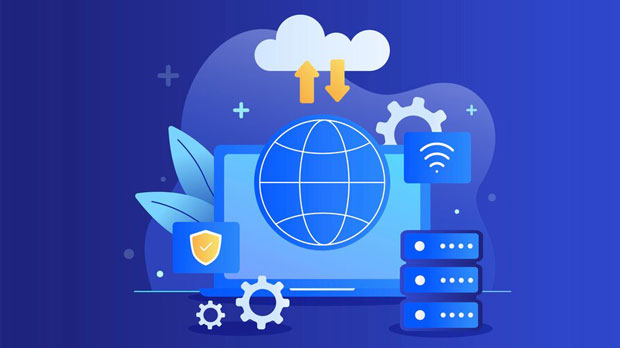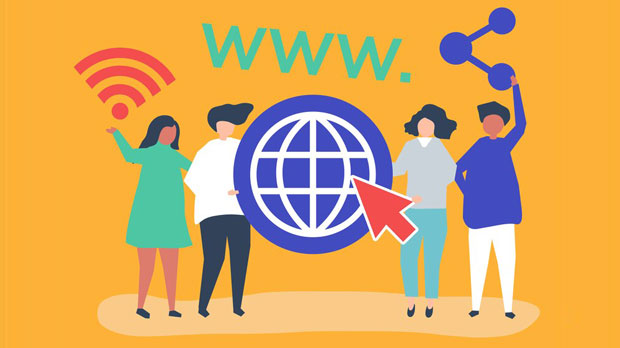In today’s digital world, privacy and security have become a growing concern. As internet users increasingly seek ways to protect their online identities and access restricted content, free proxy servers are often seen as an attractive option. They provide anonymity by masking users' IP addresses, offering access to blocked websites, and even improving internet speed in some cases. However, while these services may seem convenient, there are numerous hidden risks associated with using free proxy servers. From compromised data security to the potential for malicious attacks, the drawbacks often outweigh the perceived benefits. This article delves into the dangers of relying on free proxy servers and highlights the risks that users may unknowingly face. 1. Data Security RisksOne of the primary concerns with free proxy servers is the risk to personal data security. Proxy servers act as intermediaries between a user’s device and the websites they visit. When you route your traffic through a proxy, it gains access to the data being transmitted, including sensitive information like login credentials, personal identification details, and financial information.With free proxies, there’s often little to no encryption or protection mechanisms in place to secure the data being transmitted. This means that anyone, including hackers, can easily intercept and exploit this data. Even worse, some free proxy services are deliberately designed to capture users' information and sell it to third parties for commercial purposes, without their consent.Furthermore, without a secure connection (e.g., SSL/TLS encryption), any communication between the user and the proxy server can be intercepted by malicious actors. This risk is significantly higher if the proxy server is hosted in a country with lax data privacy regulations or if the server is poorly maintained.2. Malware and VirusesAnother major hidden risk of using free proxy servers is the potential exposure to malware, viruses, and other malicious software. Some free proxies are notorious for infecting users’ devices with harmful software. They can achieve this in several ways, such as inserting malicious scripts into the websites users visit, or by using the proxy itself as a vehicle for spreading infections.Because many free proxy servers are not regularly monitored or updated, they are more vulnerable to exploitation by cybercriminals. Once a user connects to a compromised proxy, their device could be exposed to a variety of threats, including spyware, adware, ransomware, and more. These threats can cause significant harm to a user’s device, stealing personal data, or locking files until a ransom is paid.Even if the proxy does not directly inject malware, there’s still a risk of visiting websites that are unknowingly redirected to malicious domains. The lack of security and oversight in free proxy services makes them an ideal entry point for cybercriminals looking to exploit unsuspecting users.3. Unreliable PerformanceFree proxy servers often suffer from poor performance, and this can have a significant impact on users’ browsing experience. Unlike paid services, which tend to have dedicated servers and sufficient resources to handle traffic, free proxies are typically overcrowded with users. This results in slow connection speeds, frequent disconnections, and a general decline in the quality of the internet experience.Overloaded servers can lead to frequent downtime, making it difficult for users to reliably access websites or services. This is especially problematic when using proxies for tasks that require a stable and fast connection, such as online banking or streaming content. Furthermore, unreliable proxy servers may often break or become inaccessible, leaving users without access to the services they need.Additionally, the lack of quality control means that free proxies are more prone to performance issues, and users might find themselves constantly looking for new proxies when the current one fails to meet their needs.4. Privacy ViolationsPrivacy violations are a significant risk when using free proxy servers. While many people turn to proxies to protect their privacy and anonymity, the reality is that free proxies may be more likely to violate those very principles.Some free proxy servers may log users' online activity, including the websites they visit and the data they enter. These logs can then be sold to third-party advertisers or used for other purposes, such as tracking users for marketing purposes. Even if the proxy promises not to log user data, there’s no way for users to independently verify this claim, as the server may not have transparent policies or security measures in place.In addition, some free proxies are run by individuals or organizations with dubious intentions, and they may have ulterior motives for gathering data. This could include selling user information or using it for identity theft and fraud.For users who are truly concerned about their privacy, free proxies are unlikely to provide the necessary level of protection. They often lack the safeguards found in premium services, and in many cases, they could be making users' personal data more vulnerable to exposure.5. Legal and Compliance IssuesUsing free proxy servers can also expose users to legal and compliance risks, particularly if they are used to access restricted or geo-blocked content. In many jurisdictions, bypassing internet restrictions or accessing copyrighted material without proper authorization can result in legal consequences.Some free proxies may be located in countries with lax internet laws, which may seem attractive to users seeking to bypass censorship or access blocked content. However, this also means that these proxies are not bound by the same privacy regulations and laws as those based in countries with stricter data protection rules. If personal data is collected by a free proxy server based in a jurisdiction with weak privacy laws, users’ sensitive information may be more vulnerable to misuse.Additionally, if a user engages in illegal activities while using a free proxy, such as downloading pirated content or conducting fraud, the proxy service may not be held accountable. Users could potentially face legal repercussions, even if they believed they were using the service for legitimate purposes.6. False Sense of SecurityFinally, many users mistakenly believe that free proxies offer a high level of security and privacy. This false sense of security can lead people to engage in risky online activities, thinking that their data is safe and their identity is hidden.In reality, free proxy servers rarely offer the same level of security as reputable, paid VPN services. They are often poorly maintained, lack strong encryption protocols, and may not provide the anonymity that users expect. As a result, users may unknowingly expose themselves to security breaches, data theft, and privacy violations while using a free proxy.The illusion of safety can be dangerous, especially when users are not aware of the inherent risks associated with free proxy services. Without proper protection, users are left vulnerable to online threats.While free proxy servers may seem like a convenient solution for enhancing online privacy or accessing restricted content, they come with numerous hidden risks that should not be overlooked. From compromised data security and malware exposure to privacy violations and unreliable performance, the dangers of using free proxies far outweigh the potential benefits. Users should carefully consider these risks and explore more secure and reliable alternatives for safeguarding their personal information and online activities.Understanding the potential pitfalls of free proxies can help individuals make informed decisions when it comes to their digital privacy. Investing in a paid, reputable service may offer a safer and more reliable way to navigate the online world without exposing oneself to unnecessary risks.
Apr 16, 2025
![arrow]()




























































